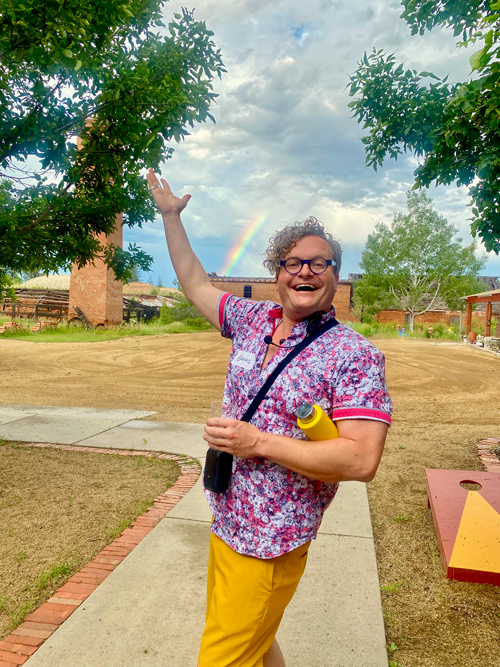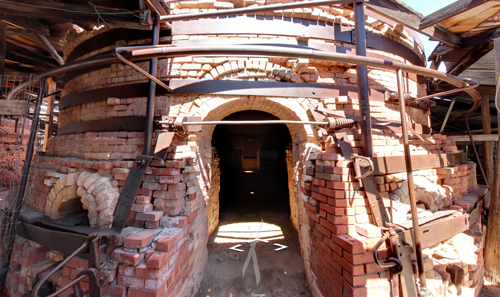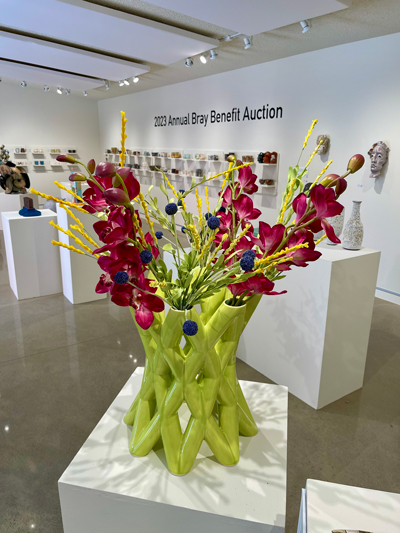
An Interview with Brooks Oliver, New Board Chair of the Archie Bray Foundation
 The Archie Bray Foundation is a cornerstone in the ceramics world, hosting 20-25 resident artists annually and welcoming around 15 visiting artists, many of whom are well-established. Thousands visit its grounds, galleries, exhibitions, and events annually. The foundation promotes excellence and enhanced commitment and investment in the ceramic arts. It is also a key player in the local economy with an estimated annual financial impact of $3 to $4 million on the city of Helena and Montana, highlighting its significance as both a leader in ceramics and a vital contributor to the region's cultural and economic landscape.
The Archie Bray Foundation is a cornerstone in the ceramics world, hosting 20-25 resident artists annually and welcoming around 15 visiting artists, many of whom are well-established. Thousands visit its grounds, galleries, exhibitions, and events annually. The foundation promotes excellence and enhanced commitment and investment in the ceramic arts. It is also a key player in the local economy with an estimated annual financial impact of $3 to $4 million on the city of Helena and Montana, highlighting its significance as both a leader in ceramics and a vital contributor to the region's cultural and economic landscape.
CN&V recently interviewed Brooks Oliver, assistant professor of Studio Art: Ceramics, about his role as the new board chair of the Archie Bray Foundation and his experiences as a resident artist and a leader in the ceramics community.
CN&V: What role does the Archie Bray Foundation play in ceramics?
Oliver: The Archie Bray Foundation is widely regarded as the birthplace of contemporary ceramic art in the United States, and it holds a unique position globally. Its prestigious fellowship and residency program is one of a kind, specifically designed for ceramic artists. The foundation hosts 10 long-term residents yearly, who stay for up to two years, and 10-15 short-term residents during the summer. While other programs, such as Penland, cater to various crafts, the Bray remains the most extensive program focused solely on ceramics.
The residency is highly competitive, with 250-400 artists applying annually. Many notable ceramic artists have been residents at the Bray, which has cemented its reputation both nationally and internationally. Although securing visas can be challenging, the foundation typically hosts several international residents yearly, extending its global reach and influence. The Bray is truly a hub for innovation and collaboration in ceramics.
CN&V: Why did you complete a residency at the Archie Bray Foundation, and how did it impact your career?
 Oliver: From 2014 to 2016, I completed a two-year residency at the Archie Bray Foundation, which was truly a transformative experience. The foundation provided me with a state-of-the-art facility, my studio, access to kilns of all types, materials at cost, and a living stipend. The visiting artist program offered invaluable networking opportunities and learning from established artists.
Oliver: From 2014 to 2016, I completed a two-year residency at the Archie Bray Foundation, which was truly a transformative experience. The foundation provided me with a state-of-the-art facility, my studio, access to kilns of all types, materials at cost, and a living stipend. The visiting artist program offered invaluable networking opportunities and learning from established artists.
The residency gave me the time and space to focus on my work, especially since I had just finished graduate school. I could dive into independent research while being part of a supportive and collaborative artistic community. The experience also taught me how to navigate life as a professional artist, from selling my work to making a living through my practice. With subsidized housing and access to all the necessary tools, I could devote myself entirely to my craft.
In addition to working alongside emerging and established artists, I had the opportunity to teach at the Bray’s Education Center and sell my work through its galleries. The Bray’s reputation as a destination for artists and tourists allowed me to showcase my work in exhibitions across the U.S. and internationally, helping to build my national reputation. It also provided a platform to share my research, ultimately leading to my academic teaching career. The Archie Bray Foundation is an unparalleled place for artists to grow and develop their work within a global creative community.
CN&V: How does the Bray influence the ceramics field today?
Oliver: Each year, the Bray brings together a highly diverse community of artists working in a shared space, which fosters a natural exchange of ideas and practices. Artists from different backgrounds—production potters, sculptors, activists, or installation artists — come together to collaborate and discuss the field of ceramics and its future. These interactions often spark new ideas and push the field forward. What sets Bray apart is that it doesn’t prescribe the direction of these conversations. Instead, it creates the environment for these exchanges to happen organically.
For emerging ceramicists, the field is wide open. The Bray supports various approaches, from functional ceramics like dinnerware and mugs to large-scale sculptures or installations for galleries and public spaces. The residency isn’t focused on structured learning but rather on each artist's unique needs. Whether an artist is honing a technique, exploring new materials and firing methods, or building connections with galleries, the Bray provides the flexibility and support to pursue individual goals.
 CN&V: Areas of focus for today's ceramicists can include the following.
CN&V: Areas of focus for today's ceramicists can include the following.
- Designing functional ceramics, such as dinnerware, mugs, bowls or vases.
- Working directly with a kitchenware designer or production pottery.
- Developing independent designs and selling work to a producer or manufacturer.
- Teaching students the fundamentals and advanced skills of ceramics in a school or community learning setting.
- Creating sculptures as a ceramic artist or artistic pieces for exhibition or sale in galleries or public spaces.
- Creating public artworks or installations.
- Pursuing a career in technical ceramics and industry — at manufacturers such as Kohler, Acme Brick or Eastfork Pottery.
- Working and assisting other artists in the creation of their work.
CN&V: What are your responsibilities as board chair?
Oliver: I joined the Board of Directors in the summer of 2021. Board members can serve up to three three-year terms for a total of nine years. I became board chair this year, with a two-year term, though officer terms can be extended indefinitely if re-elected. I expect to serve for at least four years in this role.
As board chair, I’m involved in all committees, including executive, governance, development, facilities, auction, and the 75th-anniversary committee. My responsibilities include leading four board meetings per year, each lasting two to three days, overseeing up to 23 board members, and meeting weekly with the executive director. I also act as the main representative of the board, both within the organization and in the broader community.
The Bray has always been crucial to my journey as an artist, and I’m honored to help lead its future development.
More
For more information about Brooks Oliver, please visit his Instagram, @BrooksOliver, and website, Brooks Oliver.
Images: 1) Widescreen view of the Archie Bray Foundation facilities, including brick buildings, smokestacks and roads. 2) Brooks Oliver holds up his left hand as if to point out the rainbow over the Archie Bray buildings. 3) Kilns on the grounds of the Archie Bray Foundation. 4) Vase by Brooks Oliver with flowers.






